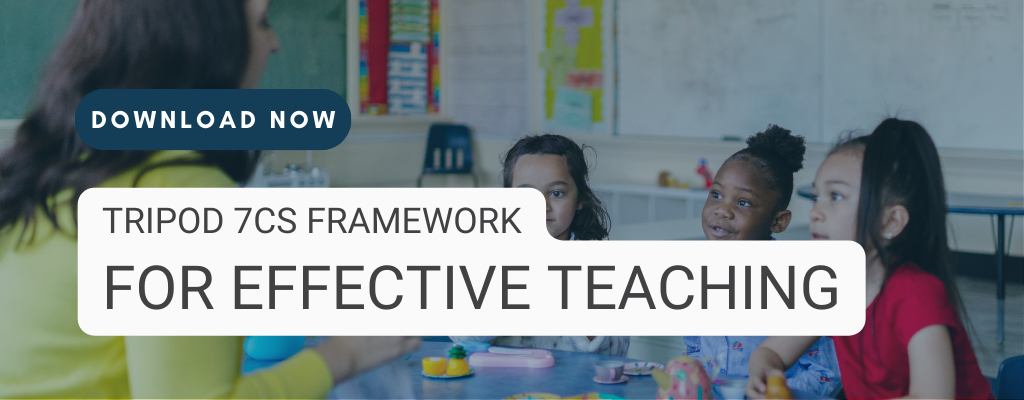
Three Essential Elements to Improve School Climate
Everyone longs for a positive school climate, an atmosphere where students, teachers, and leaders thrive. Students feel safe and connected to their teachers, peers, and school environment. There is a sense of belonging fostered by visual and verbal affirmations. Students achieve academic growth and success while developing their character. Students also feel challenged and well-equipped for their future.
In a positive school climate, teachers are respected and experience relational trust with their students, colleagues, and school leaders. They are equipped with organizational structures that support their practice: a strong curriculum, a clear and consistent schedule including time to lesson plan, eat, and establish rapport with families, just to name a few.
In a positive school environment, teachers develop professionally through routine feedback, contributing to high performance, teacher retention, and overall positive morale. Positive school environments benefit leaders, by creating the ability for them to hire and establish a strong team aligned to a shared vision of growing minds and future leaders. When leaders model key behaviors in a positive school environment, it serves as a magnetic pull to attract aligned staff. These behaviors include leading with a growth mindset, a clear mission and vision , and inclusivity. Leaders who don’t lead with these critical behaviorscan find it difficult to experience a positive school culture. They are also more likely to experience a poor school climate with a high rate of disciplinary infractions and teacher turnover, and low student achievement.Alas, there’s good news! Even if you feel like you're on the latter end of the positive/negative climate spectrum or even in the middle, there is hope. It is possible to improve your school’s culture by taking several critical steps. We observe that schools with strong school climates developed systems that create the conditions for steady growth. A positive school climate simply doesn’t happen overnight, like my oats! It takes consistent effort on the part of the district, school leaders, teachers, and students to create a culture where everyone thrives. Here are three essential elements to improve your school climate.
Conduct a retrospective
The start of any change requires an examination of what has and hasn’t worked. A retrospective is a process that allows key school members to identify positive aspects or tailwinds of a school’s climate and opportunities for growth, also known as the headwind. The first part of a retrospective includes alignment on the definition of school climate because varying definitions of school climate may exist within the building or district. According to the National School Climate Center at Ramapo for Children, school climate is the “quality and character of school life. [It] is based on patterns of students’, parents’ and school personnel’s experience of school life and reflects norms, goals, values, interpersonal relationships, teaching and learning practices, and organizational structures.” It can be summed up by “Safety, Interpersonal Relationships, Social Media, Teaching and Learning and the Institutional environment.” Discussing the definition is a strong starting point of the conversation, and from this definition (or a modified version), continue the conversation by having key school members rate the school climate on a scale. The tailwinds include the ‘keep doings” and the headwinds highlight potential threats and changes that should take place.
Administer and analyze survey data
While the retrospective conversation often happens at a higher level between school and district leaders, it is useful to gather student feedback. "If you cannot measure it, you cannot improve it." Tripod offers the 7C Student Perception Survey, a great tool to survey students and foster improvement in the overall quality of school climate with an emphasis on effective teaching and learning. Education Elements administers Tripod surveys to gather, organize, and report on student, teacher, and family perspectives to support school improvement efforts and student outcomes. The survey is centered around the Tripod 7Cs Framework of Effective Teaching, which represents a set of best teaching practices. Students provide feedback on their perception of the classroom teaching and learning environment. Based on the definition of school climate, students can elaborate on their experience using the 7Cs: Care, Confer, Captivate, Clarify, Consolidate, Challenge, and Classroom Management. The results which are research valid and reliable are provided directly to teachers and the school, district, and state level. After being administered, the survey is a helpful tool to shape the goals to improve the overall climate in the school district.
Get SMART about district aligned goals
Once the retrospective and survey are completed, it’s important to create goals that are aligned with the district’s strategic vision. If a strategic vision isn’t in place, the goal should align with the vision or hopes for the school. Some goals to consider are found in the U.S. Department of Education’s Safe and Supportive Schools model of school climate. These might include engagement, the strong relationship between students, teachers, families, and schools and strong connections between schools and the broader community. Safety involves schools and school-related activities where students are safe from violence, bullying, harassment, and controlled-substance use. Lastly, the environment includes appropriate facilities, well-managed classrooms, available school-based health supports, and a clear, fair disciplinary policy.
The success of the goal is found in its measurability and observability. The SMART goal structure is a helpful resource to aid this development. By selecting from one of the elements of school climate, it is possible to create a specific, measurable, attainable, realistic and time-bound goal that moves towards a positive school climate.
The steps for improving a school climate require effort and commitment. It’s a commitment to the bigger picture that centers on students, teachers, and leaders thriving. When a positive school climate does not exist, it’s important to take the time to reflect on what headwinds are contributing to this change. Using the 7Cs survey is a key tool in improving school climate and setting school goals. It’s also one of the many surveys Tripod offers that ultimately improve learning outcomes. You can learn more by clicking on the image below.







